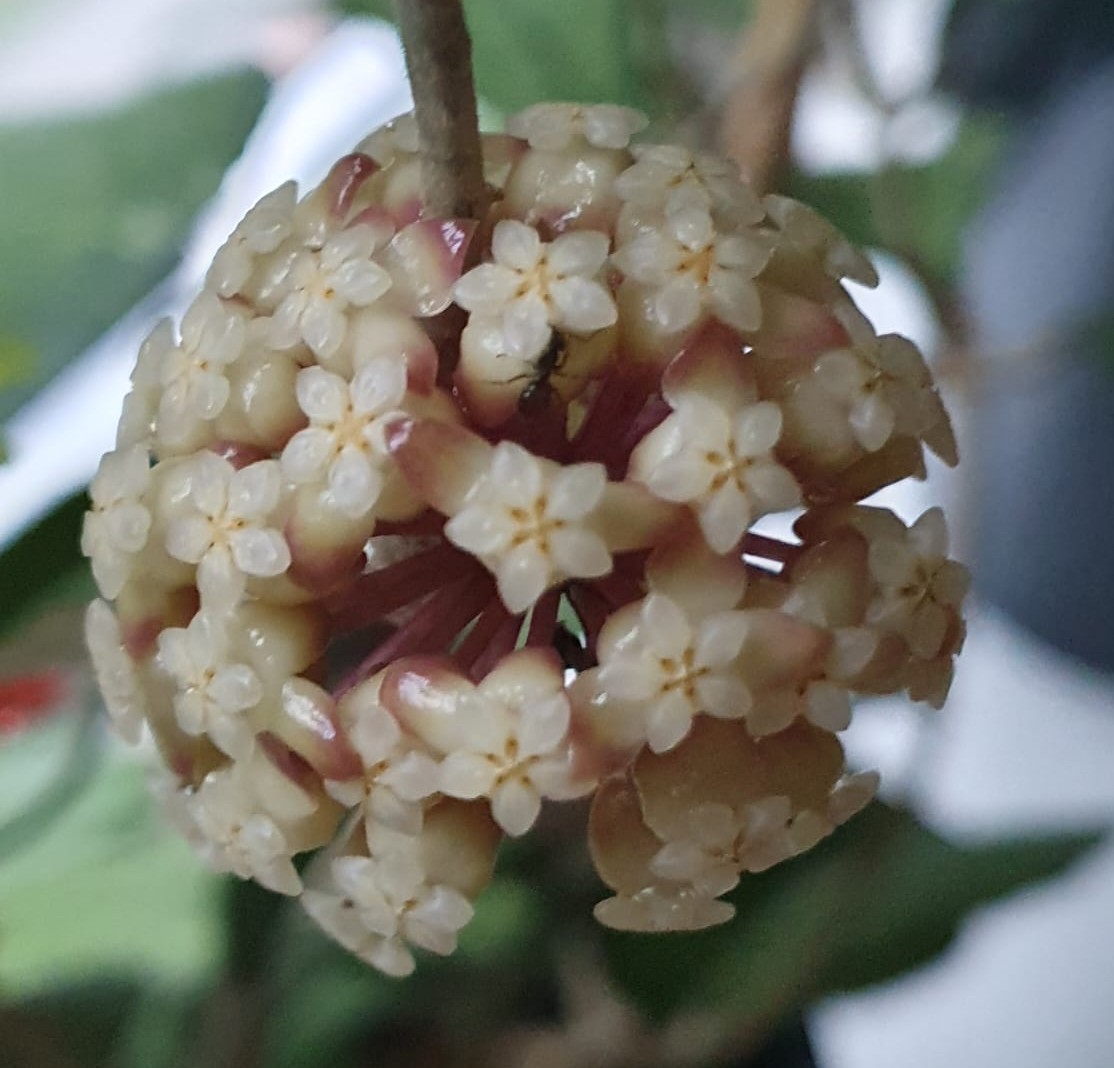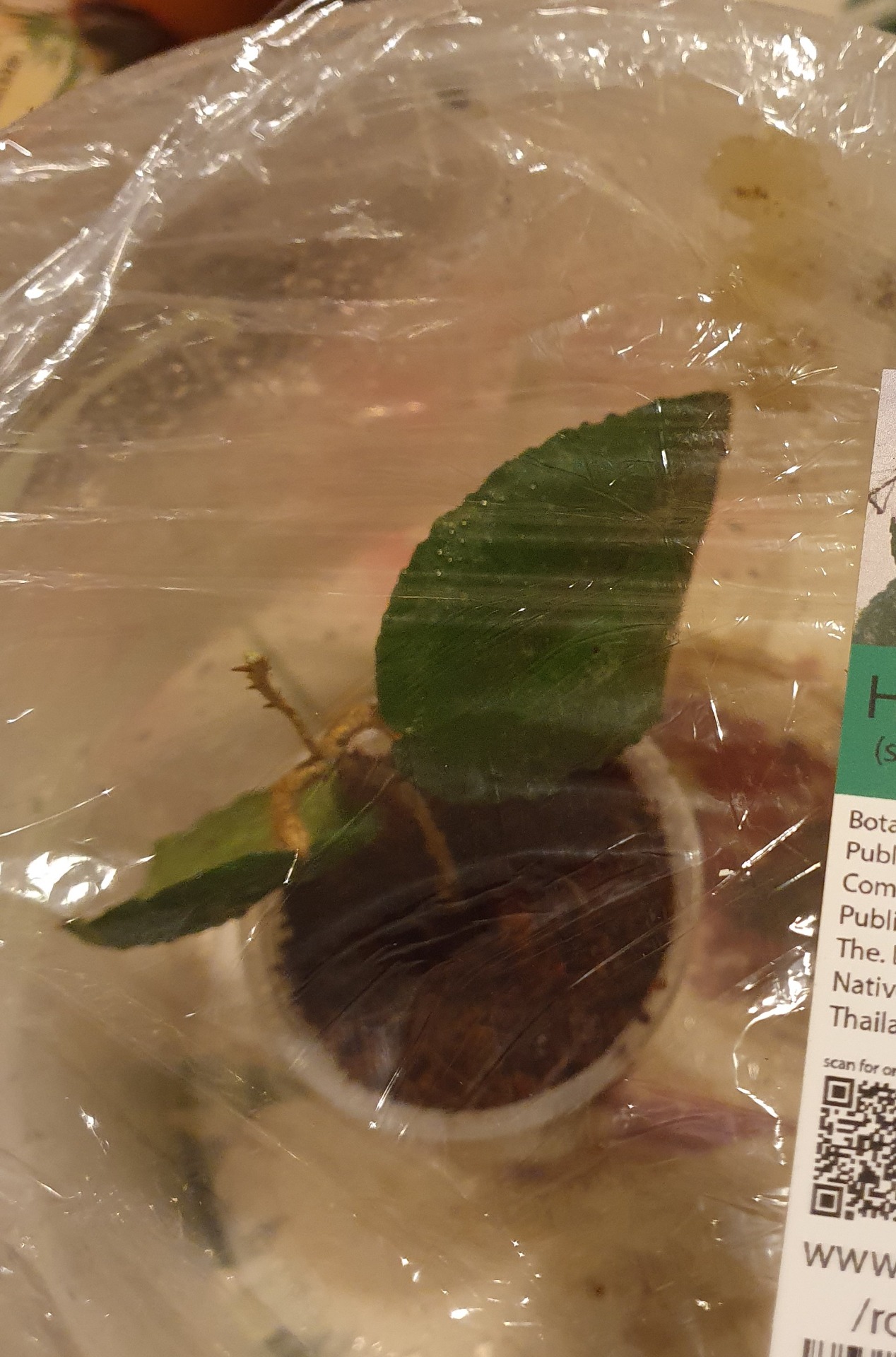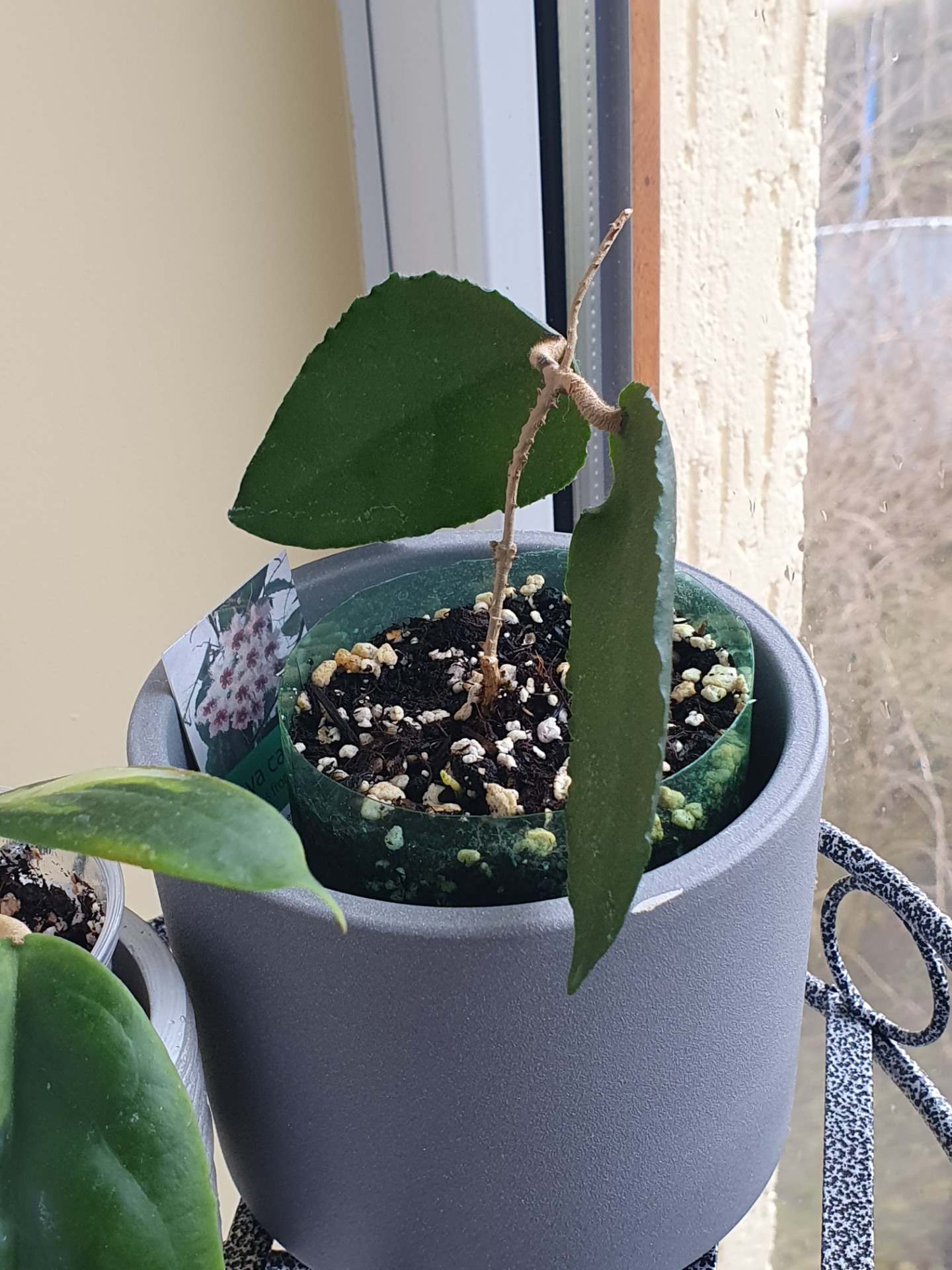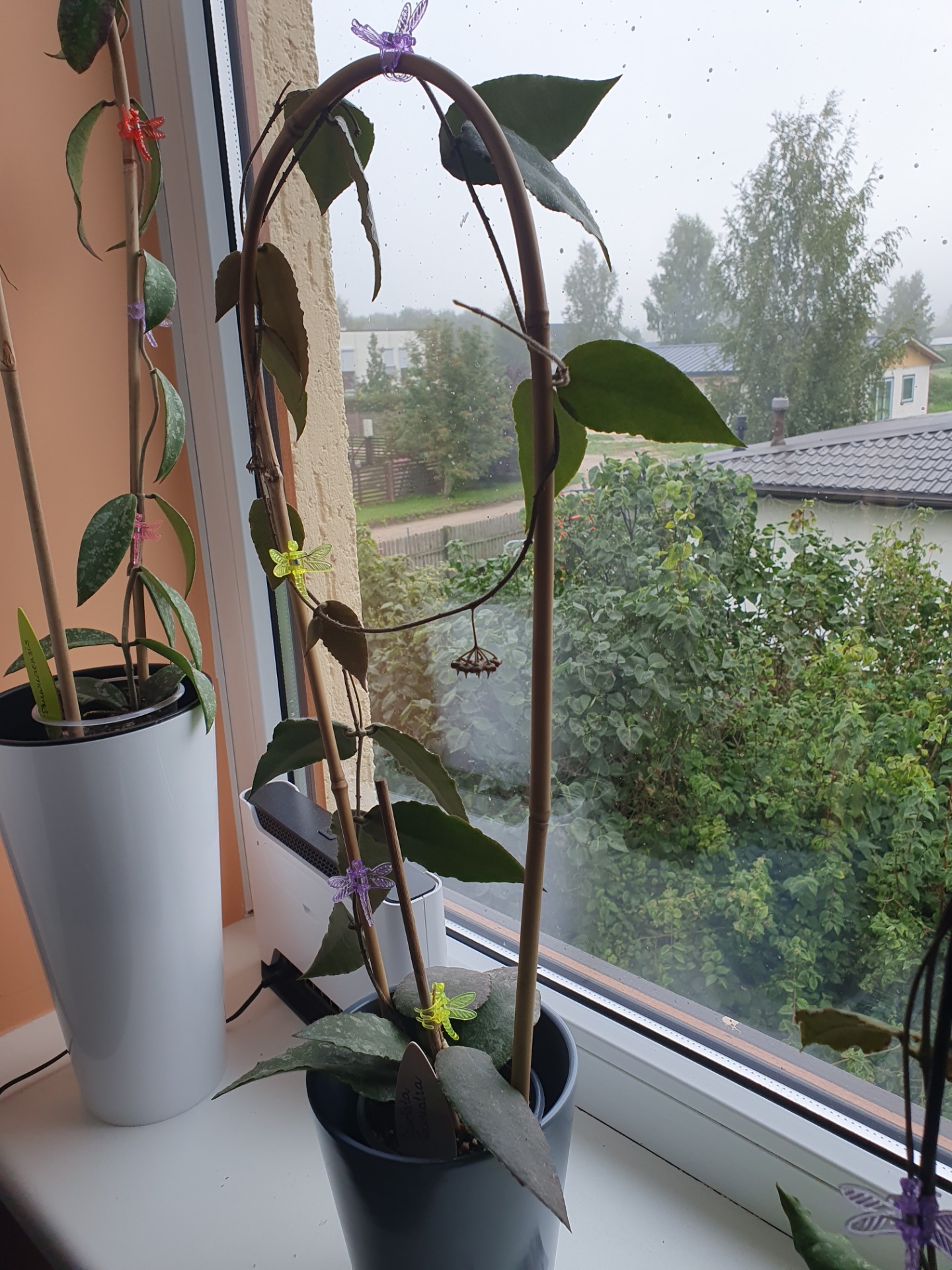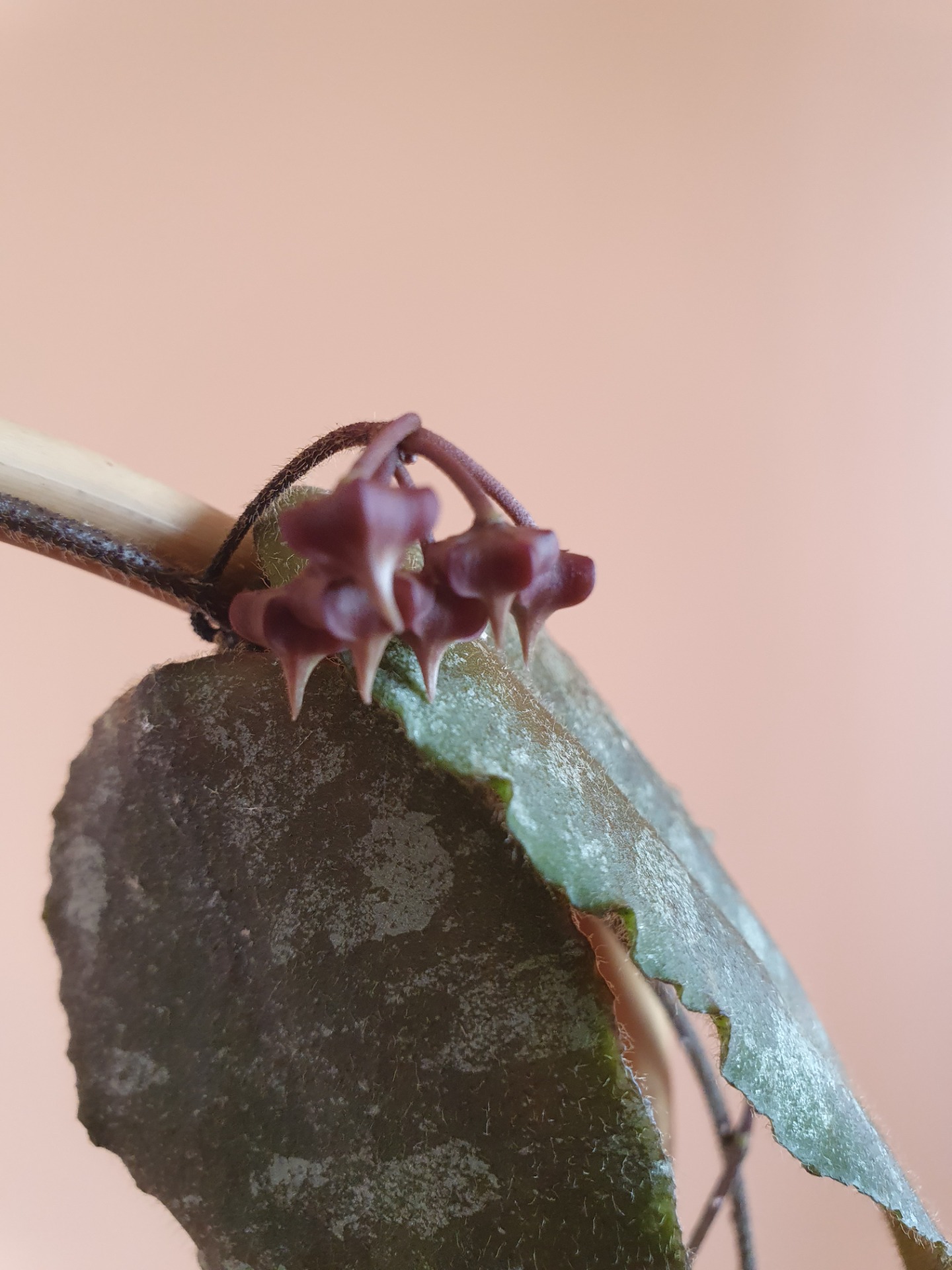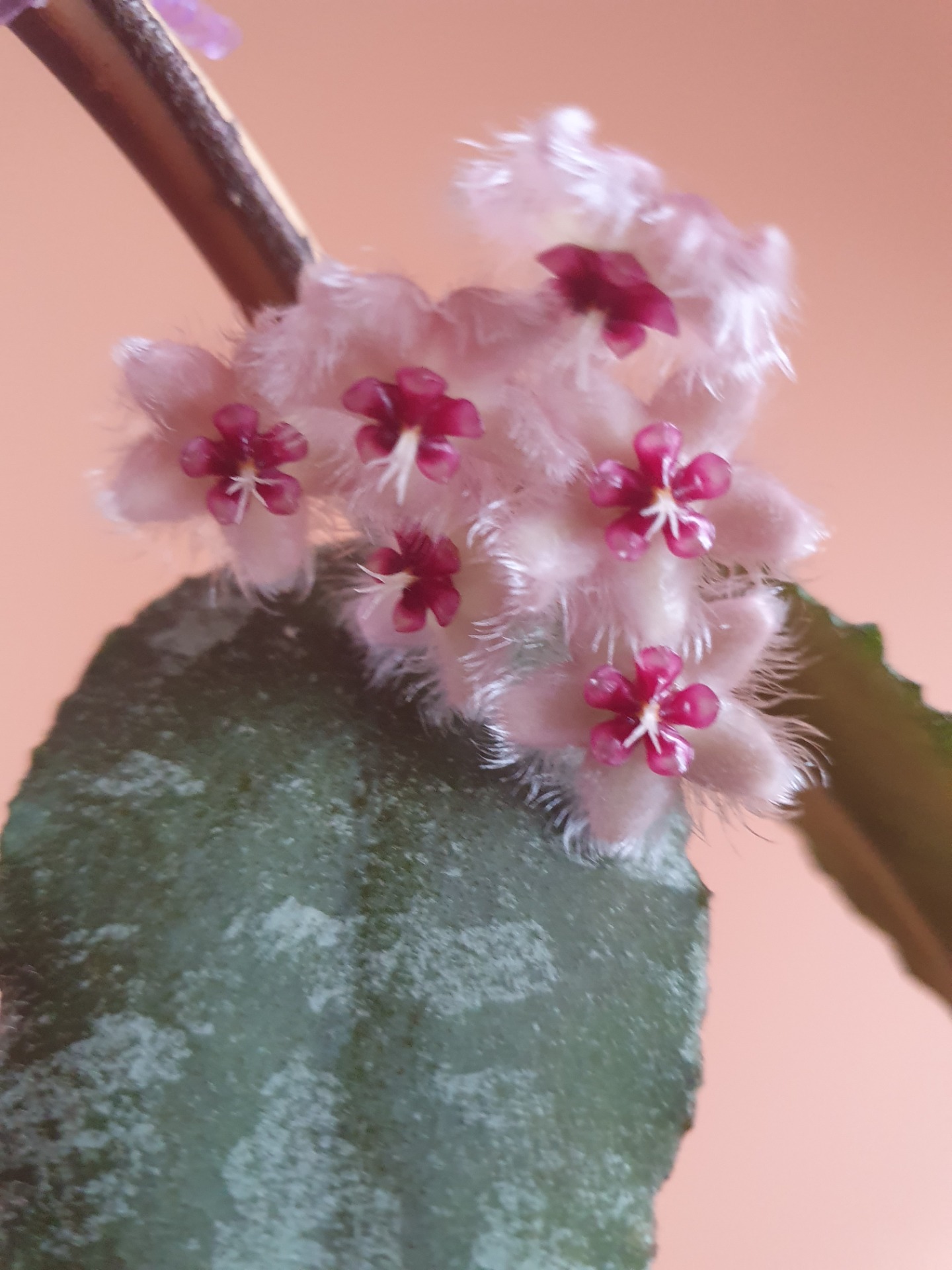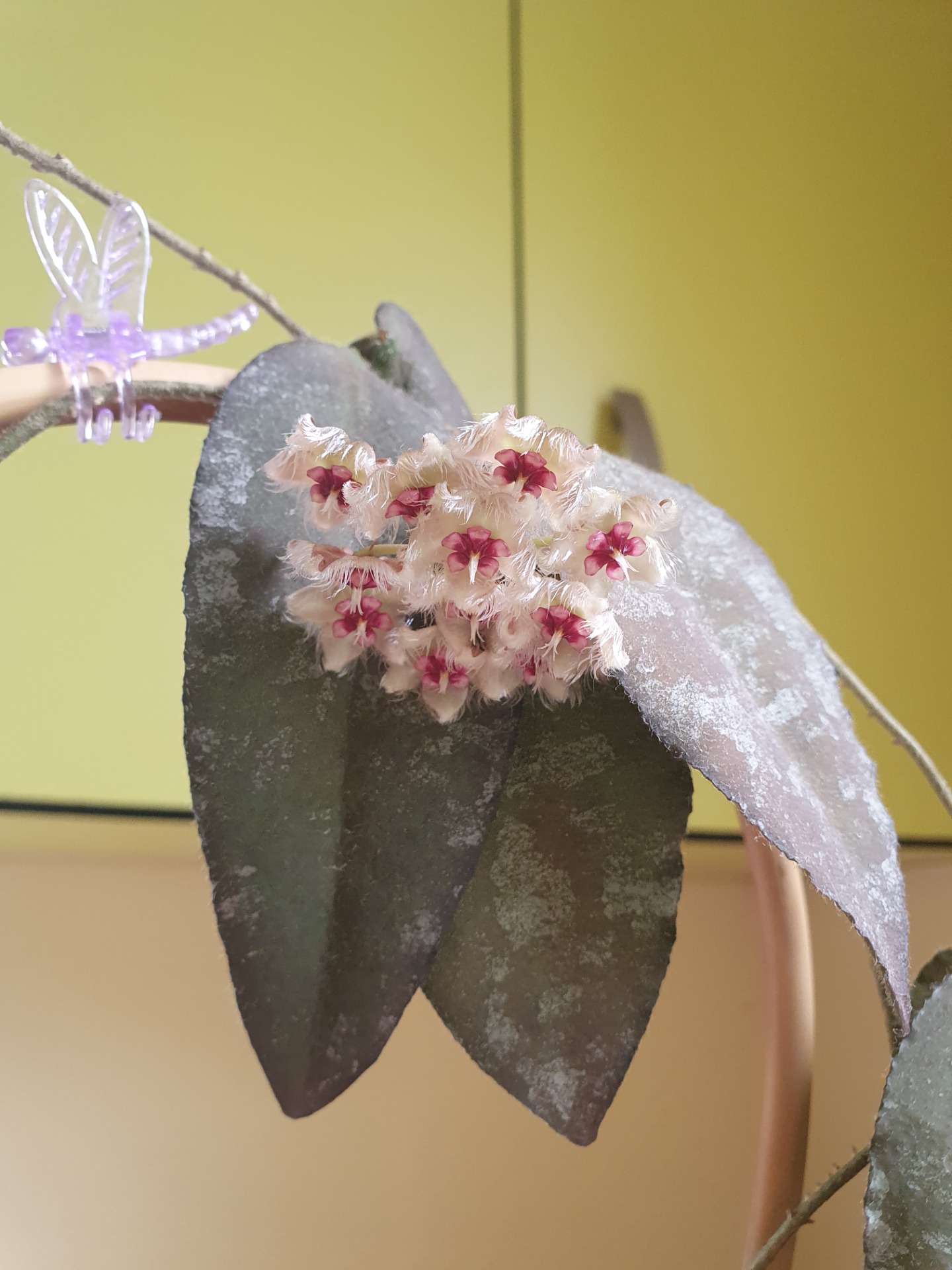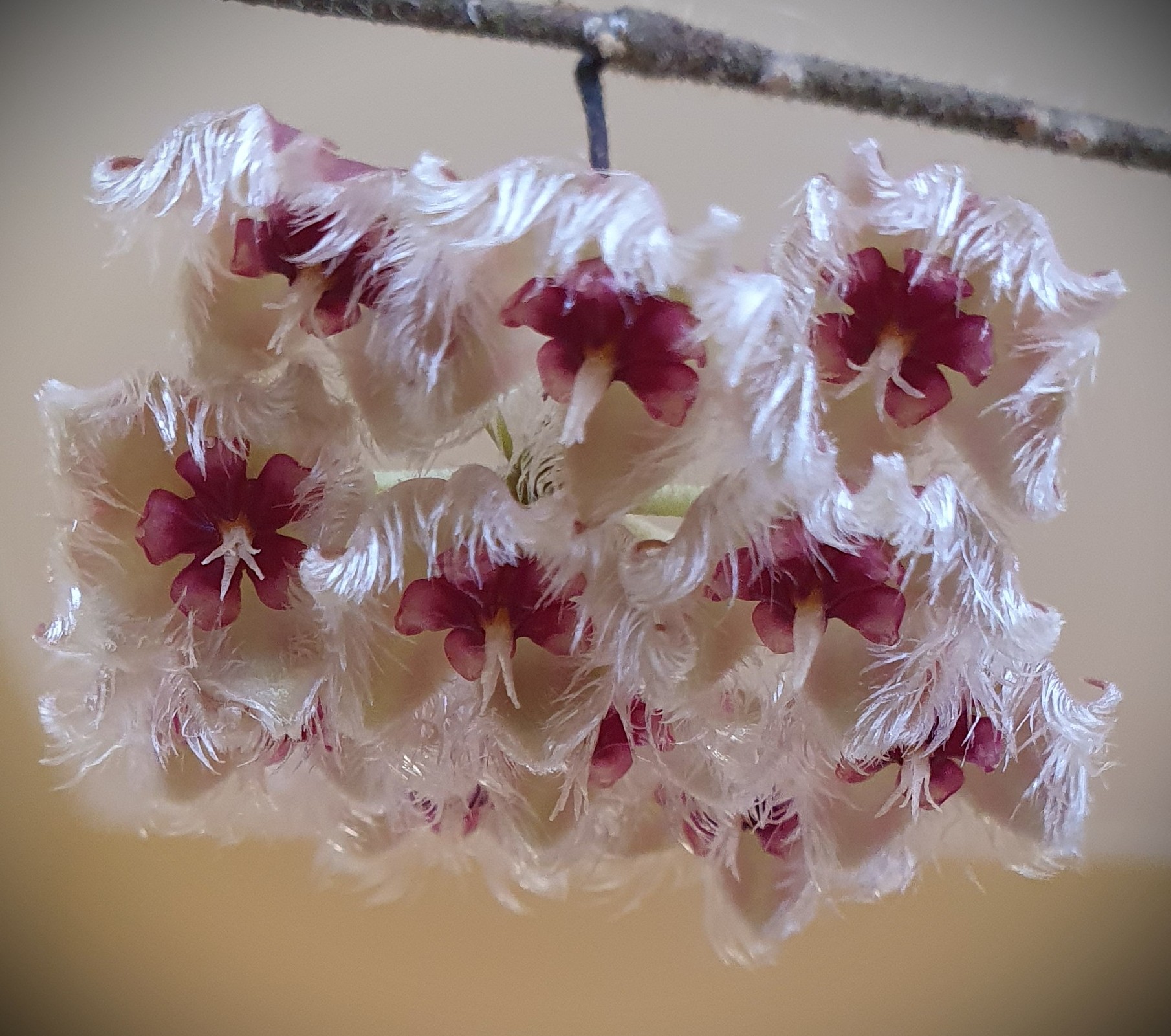
About hoya Caudata Sumatra
This is a hoya that I wanted very, very much :) and from the very beginning, but it took almost 3 months for me to find a grower. And so, at the end of December 2022, I became the owner of a two-leaf cutting. The rooting of the cutting in a homemade greenhouse took 5 weeks, but I had to wait until the end of May for the first sprout, because I transplanted it into a slightly larger pot, which again slowed down the growth of the hoya until it filled the new pot with the necessary amount of root mass. When I finally saw the first 2 house leaves bloom and a mustache stretching in the middle, my joy was indescribable:) By this time, both basal leaves had also grown larger, become extremely hard, even rough, like sandpaper. Growth continued very rapidly and at the end of August I already expected the first house flowering. And so my cutting grew and grew and now it has grown into a proper mother plant, which blooms with indescribably beautiful and fragrant flowers, which for some reason remind me of little ballerinas in their tutus. The scent of the flowers is very nice, but not strong, it can only be felt very close to the flower itself. Each flower blooms for only 3 days. New flowers continue to form on the old flower stalks over and over again, so if you want to enjoy the flowering of hoya, you don't need to cut them off:)
If the hoya grows in a sunny place, the leaves turn brownish-pink in the sun, but in winter they regain their mossy green tone with white-gray splashes. In summer, the hoya grows on an east-facing windowsill, but in winter on a shelf under a rather weak plant lamp. The hoya grows on a bamboo hoop, attached with clips, because it doesn't really want to wilt on its own, it grows straight, long mustaches. I have seen this hoya also grown in a hanging form.
Last winter, my Caudata Sumatra slowed down its growth, so I decided to see what was happening with the root mass, as well as change/renew the substrate. At the beginning of June, I transplanted it from a substrate based on potting soil to a bark mulch substrate (read about the substrates I use for growing hoi in my blog post here), and back into a plastic pot with drainage holes, instead of a clay pot. Because when I transplanted it, I realized the reason why my mother plant had slowed down the formation of new shoots and was simply standing still. The reason - the root mass is relatively small for the pot it was growing in. It is possible that at some point I had overwatered it and the hoi dropped part of the root. Currently, I can already see new roots on the sides of the plastic pot, it is clear that the plant is starting to inhabit the new substrate, that growth continues. And then soon I can expect new shoots and flowering again.
This example illustrates one of the principles of growing hoyas very well - most hoyas like it when the roots are tight, when the pot is small, when the pot has drainage for excess water. But about the pots in which to grow hoya, and about watering hoya another time.
Speaking of Caudata Sumatra - this is a hoya that loves to bask in the morning or evening sun, loves warmth, but does not tolerate drafts. Therefore, in the summer my hoya basks on the windowsill, but in the winter I move it to a shelf under a plant lamp. And in summer conditions and during the growing season it can also be watered a little more and fertilized.
In general, the growth of the hoya Caudata Sumatra is neither too strong nor fast, I consider this hoya to be a medium-sized and compact hoya that will delight you for many years, without taking up too much space at home, but creating subtle decorativeness around itself. And at the moment of flowering, it only enhances the elegance created around itself:)
